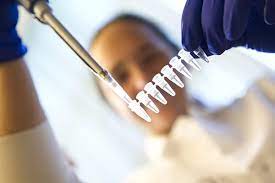
Regenerative medicine is a type of medicine that involves replacing human or animal cells, tissues, or organs with new ones. This treatment can help patients with many different conditions. It can be done in a variety of ways. These methods include transplants and gene therapy. If successful, these methods can save lives.Have a look at regenerative medicine near me for more info on this.
Although regenerative medicine therapies are not covered by most insurance plans, some plans may cover them as a supplement to other treatments. For instance, PRP injections may be covered if they’re combined with surgery. The cost of regenerative medicine treatments varies, so it’s best to talk to your doctor about your specific needs before choosing any treatments.
While regenerative medicine is an exciting field, it is not yet ready to take on the role of a cure for the most common forms of diseases. It still requires more research and clinical trials to understand whether it can be applied to ongoing conditions. However, some device companies are already involved in collaborations with regen start-ups.
Regenerative medicine aims to restore the body’s ability to regenerate at a deeper level. By providing tissues and organs with stem cells, it is possible to treat diseases and injuries by replacing lost or diseased tissue with a new one. The ultimate goal of this approach is to restore the person to full health.
Regenerative medicine also uses artificial organs and medical devices to support failing organs. Since organ transplants are difficult to find and lengthy, regenerative medicine has been used to provide support for failing organs. For example, ventricular assistive devices help support the circulation of patients during a complicated transplant process.
PRP is produced by spinning a sample of blood. The blood contains platelets, which aid in the natural healing of tissue. Injections of PRP have been used successfully in many soft-tissue injuries. It is safe and requires only minor downtime. Patients can return to normal activities after the procedure.
Somatic cells are limited in their ability to target a wide range of diseases. A more versatile approach to regenerative medicine relies on the ability of stem cells to differentiate into other cells. The resulting therapies improve a patient’s health and quality of life. The goal of regenerative medicine is to help the body restore its own self-healing ability.
One of the first steps in regenerative medicine is to use stem cells from the patient’s own fat, blood, or bone marrow. This therapy harnesses the body’s ability to regenerate lost tissues and cells, and restores the body’s function to normal. The Institute for Stem Cell and Regenerative Medicine works to advance new therapies that use these cells to treat diseases.
Regenerative medicine has also been linked to gene therapy. This involves placing genes in cells to cause them to produce a desired effect. It is gaining ground in Japan, where scientists are able to reprogram adult cells to become stem cells.
CONTACT INFO:
QC Kinetix (Midland)
3300 N A St, Bldg 8,
Suite 125 Midland, TX 79705
Phone No. :(432) 203-6622